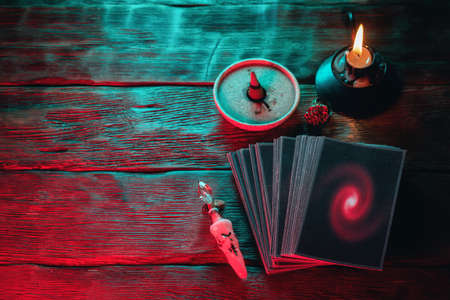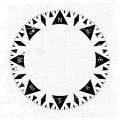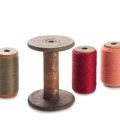An Ancient Dance: The Origins and Purpose of Pendulums
Across centuries and continents, the simple swing of a pendulum has woven itself into the tapestry of human curiosity and spiritual exploration. From the time of ancient Egypt to the rolling green fields of Britain, pendulums have been more than mere tools—they are storytellers, keepers of secrets, and guides for those seeking answers beyond the visible world. In Celtic lore, wise women and cunning folk would use weighted cords to divine water or lost treasures, shaping British traditions that live on in the practice of dowsing. This gentle oscillation became a silent conversation between seeker and spirit, earth and intuition. Today, whether held by a seasoned dowser in rural England or an urban mystic searching for clarity, the pendulum continues its age-old dance—a quiet yet powerful presence bridging past wisdom with present wonder.
The Art of Movement: How Pendulums Work
Step into the mesmerising dance of the pendulum, where science and spirit entwine. At first glance, a pendulum appears simple: a weighted object suspended from a fixed point, free to swing in gentle arcs. Yet beneath this graceful movement lies a fascinating interplay between physics and intuition—a bridge between the visible and the unseen.
The Science Behind the Sway
When set in motion, a pendulum swings due to gravity pulling it back towards its resting position. This rhythmic movement is known as oscillation, and it’s governed by precise laws of physics. In Victorian England, pendulums were crucial for keeping time, as their reliable motion was harnessed in grand clock towers across the land. But beyond mere mechanics, many have long believed that a pendulum’s movement can reveal answers hidden from our rational mind.
Energy Meets Intuition
In spiritual circles, pendulums are thought to respond not just to physical forces but also to subtle energies—those gentle whispers from your intuition or even the energetic fields surrounding us all. The way your pendulum swings (be it clockwise, anti-clockwise, back-and-forth or side-to-side) is often interpreted as a response to yes/no questions or energetic imbalances.
Pendulum Motions: What Do They Mean?
| Movement | Common Interpretation (UK) |
|---|---|
| Clockwise Circle | Yes / Positive Energy |
| Anti-clockwise Circle | No / Negative Energy |
| Straight Back-and-Forth | Uncertain / Seek Clarity |
| Side-to-Side | No / Blocked Path |
This blend of the scientific and the mystical invites you to become both observer and participant—watching closely as invisible energies become visible with each gentle sway. Whether you’re seeking guidance or simply marvelling at natural laws, using a pendulum reminds us that there is art in every movement, and wisdom waiting in stillness.

3. Choosing Your Pendulum: Material, Shape, and British Inspirations
Embarking on the quest to find your perfect pendulum is a journey woven with intuition and the subtle whispers of tradition. The material of your pendulum plays a significant role in how you connect with it; each stone, metal, or crystal carries its own distinct energy. In Britain, we are blessed with a rich geological tapestry—consider sourcing pendulums crafted from local stones like Blue John from Derbyshire, mystical Preseli Bluestone from Wales (the same used in Stonehenge), or Cornish Serpentine. These stones not only ground your practice in the landscape of the British Isles but also echo centuries-old folklore and ancestral memory.
Material Matters: Local Stones and Their Lore
Blue John, with its swirling bands of purple and gold, has long been cherished for its calming energy and association with clarity. Preseli Bluestone is steeped in legend, believed by some to enhance spiritual connection and inner vision. Amethyst—often found in Scottish cairns—brings a gentle protection and heightened intuition. Choosing a material that resonates with your spirit is more than an aesthetic decision; it’s about feeling into what energy supports your intentions best.
Shapes Steeped in Meaning
Pendulums come in many forms: teardrop, point, sphere, or even acorn-shaped—a nod to the sacred oak groves of ancient Britain. Each shape influences how energy flows through the tool. Pointed pendulums focus energy for precise answers, while rounded or heart-shaped ones offer softer, more nurturing vibrations. Consider what calls to you: does the grounded weight of a stone feel reassuring in your palm, or does the sleekness of a brass pendulum inspire clarity?
Infusing Folklore and Personal Connection
In British tradition, objects imbued with story hold deeper magic. Perhaps you’re drawn to a pendulum carved by a local artisan or one passed down through family—a living thread connecting you to generations past. Spend time holding different pendulums, noticing which one seems to hum gently in your hand or spark a sense of recognition deep within. Your pendulum should feel like an ally—an extension of your own intuition and an echo of Britain’s mystical heritage.
Ultimately, let your choice be guided by both practical consideration and soulful resonance. When you select a pendulum that honours both your personal journey and the land beneath your feet, you invite not just guidance but enchantment into your divinatory practice.
4. Awakening Connection: Cleansing, Bonding, and First Steps
The pendulum’s journey with you begins before its first swing; it starts with the sacred act of cleansing and bonding. These simple rituals, inspired by the gentle wisdom of Celtic and British traditions, invite you to awaken a soulful connection—ensuring your pendulum is attuned to your energy rather than carrying echoes of other hands or places. Here’s how to begin this shared rhythm:
Cleansing Rituals: Clearing Old Energies
Before your pendulum can truly serve as your guide, it must be freed from lingering energies. In Britain’s folk heritage, nature plays a central role in purification. Here are some heartfelt methods:
| Method | Description | Rooted in Tradition |
|---|---|---|
| Spring Water Rinse | Gently pass your pendulum through running spring water or leave it in a bowl overnight. | Draws upon the purity of British wells and sacred springs. |
| Moonlight Bath | Place your pendulum on a windowsill under the light of a full moon. | Celtic reverence for lunar cycles and renewal. |
| Herbal Smoke | Waft smoke from dried sage, rosemary, or rowan around the pendulum. | Blessings from ancient British hedgerows and hearths. |
| Salt Circle Rest | Bury the pendulum in sea salt for several hours. | The cleansing power of Britain’s coastline and earth wisdom. |
Bonding: Weaving Your Energy Together
Once cleansed, it’s time to gently bond with your pendulum. In the British Isles, objects become alive through intention and presence. Hold your pendulum quietly in your hand. Breathe deeply. Whisper your purpose—whether seeking clarity or comfort—and imagine roots growing between your palm and the pendulum’s form. This is not about control but partnership; trust builds as you share daily moments together.
Your First Steps in Shared Rhythm
- Name Your Pendulum: Give it a name that feels meaningful—this old tradition invites respect and camaraderie.
- Create a Small Altar: Place your pendulum on a piece of oak or beside a candle when not in use—a nod to Celtic appreciation for sacred spaces.
- Begin Each Session with Gratitude: Thank the spirit of the tool and the wisdom it brings, echoing age-old customs of honouring one’s guides.
A Gentle Reminder
Your journey with the pendulum is personal yet steeped in collective memory—a dance between seeker and guide under British skies. As you cleanse, bond, and take your first steps, you lay the foundation for guidance that is both grounded and mystical, connecting past tradition with present intuition.
5. Trusting the Whisper: Asking Questions and Interpreting Answers
With gentle guidance and a touch of British sensibility, learning to ask your pendulum questions is much like having a heart-to-heart with an old friend over a cuppa. Begin by framing your questions simply—think yes or no, clear and direct, just as one would expect in everyday conversation in a local café. This keeps things straightforward and avoids confusion, much like the understated wisdom woven into daily British life.
Framing Your Questions
Before you begin, take a moment to ground yourself—perhaps by taking a few deep breaths or sitting quietly in your favourite armchair. Hold your pendulum gently and ask it to show you what ‘yes’ and ‘no’ look like; this could be a swing forward and back, or side to side. Remember, there’s no rush here—clarity comes from patience and presence.
Reading the Movements
Once your pendulum has shown its signals, you’re ready to ask your question. Keep it simple: “Is this decision right for me?” or “Should I take this path?” Watch the movement with an open mind. The key is not to force answers but to receive them—like listening for the faintest whisper through a gentle English breeze.
Trusting Your Intuition
This is where intuition steps in. The pendulum is only as clear as your trust in yourself. If doubt creeps in (as it often does on rainy days), pause and return when you feel centred again. Trust that the quiet voice within knows more than you think—often echoing the quiet confidence found in British understatement.
By approaching each question with curiosity rather than expectation, you allow the wisdom of the pendulum—and your own inner knowing—to guide you gently forward, grounded in the simplicity and subtlety that characterises true British spirit.
6. Stories of Spirit: Pendulums in British Lore and Everyday Life
Across the rolling fields of the Cotswolds, to the bustling terraces of London, pendulums have swung quietly through British history—serving as both mystical tools and everyday companions. Their subtle power has found its place not only in the hands of seasoned dowsers but also at kitchen tables where generations have gathered seeking gentle guidance.
The Tale of the Old Oak and the Silver Chain
One oft-whispered story hails from a quiet Sussex village, where an elderly woman was renowned for her ability to find lost objects with nothing more than her grandmother’s silver locket suspended on a thread. Villagers would come from miles around, their trust anchored in her steady hand and the locket’s unwavering swing. The story goes that when a cherished ring went missing before a wedding, it was the pendulum that led them straight to it—tucked between roots of an ancient oak, as if guided by unseen wisdom.
Pendulums in Everyday British Life
Beyond folklore, pendulums continue to hold a place in the heart of British homes. In many households, especially among those who cherish traditional remedies or garden lore, you might hear of someone ‘asking the pendulum’ before planting new seeds or deciding when to harvest. These small rituals echo through time, blending intuition with the practical rhythms of countryside living.
A Modern Twist: Trusting Intuition
In today’s fast-paced world, Britons still seek solace in simple acts—cuppa in hand, perhaps consulting a crystal pendulum before making decisions about home or health. Stories abound of friends gathering for a Sunday roast and passing around a rose quartz pendulum, laughing as it spins answers to light-hearted questions, yet pausing thoughtfully when deeper matters arise. The act weaves connection—not just to spirit, but to each other and to tradition.
These stories remind us that whether you choose your pendulum from a local apothecary or inherit one steeped in family history, what truly matters is the trust you place in it. Rooted in British lore and everyday moments alike, pendulums invite us to listen—to stories of old, to our own hearts, and to the gentle guidance always available beneath life’s surface.


